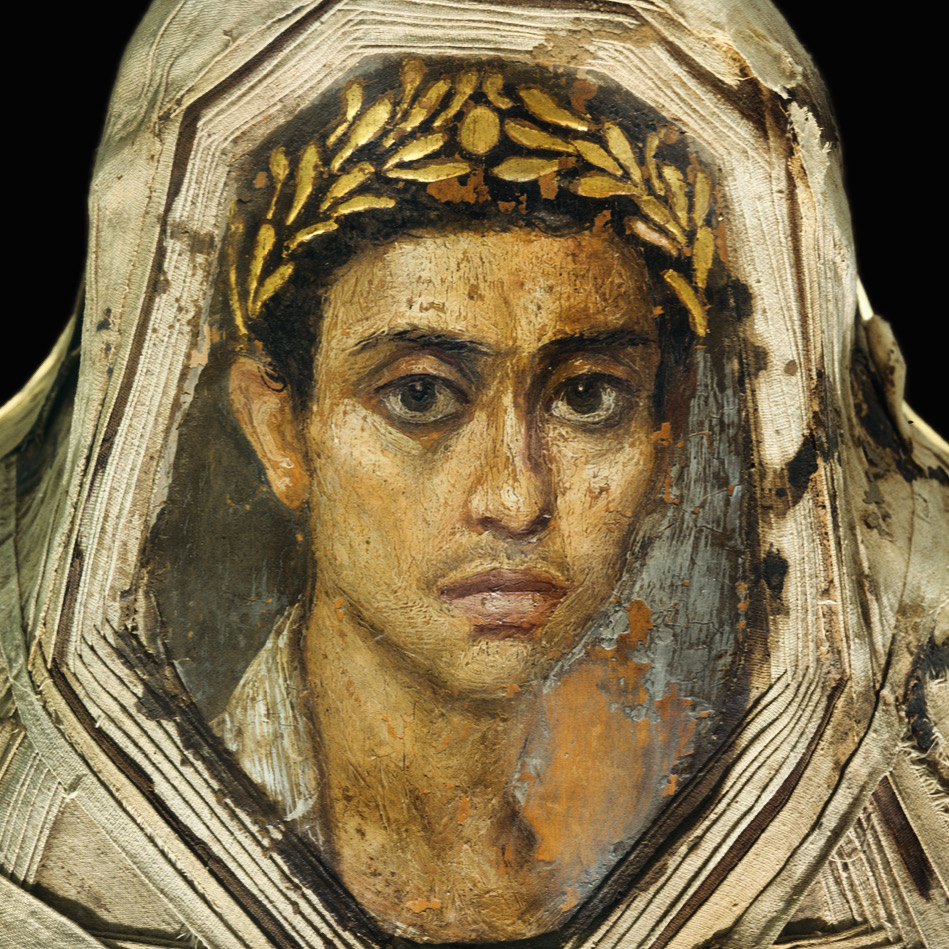Chances are you have glimpsed a ‘Fayoum portrait’ in one of the world’s great museums or reproduced online. They tend to leave an impression, so effectively capturing fleeting Roman likenesses for the ages. At the risk of being too grandiose (guilty, usually), I would venture to proclaim them one of the best remaining glimmers of the lost art of ancient Greek panel painting.


More specifically, they are happy survivals of the fortuitous marriage of Egyptian funerary practices, the Roman penchant for portraiture, and punishing arid climate. The nearly 900 known examples all hail from necropoli in the Egyptian desert, produced between the 1st and 4th centuries A.D. Eerie in technicolor (usually painted in the encaustic technique), they capture intricate fashion hairstyles, luminous gazes, and glinting gold jewelry that we are more accustomed to see in represented in whitewashed marble formats.
Divorced as most are from original find contexts, it is easy to forget that all these wooden panels were once inserted into the mummy wrappings, directly over the face of the deceased. This young man’s burial was found in 1911 by legendary archaeologist Flanders Petrie. With gloomy countenance and the beginnings of his first mustache, it’s a striking image and all the more so because it has been kept together with its wrappings.



